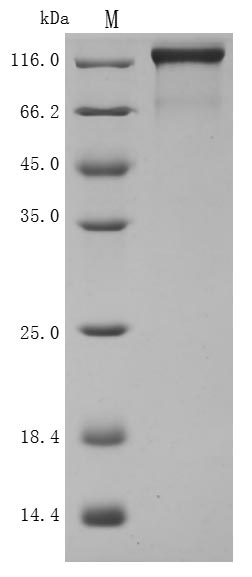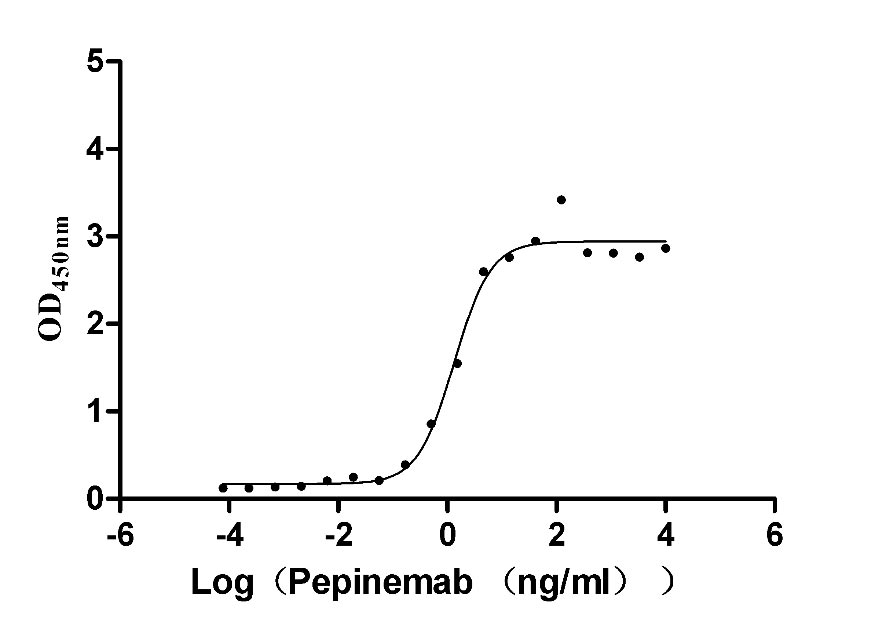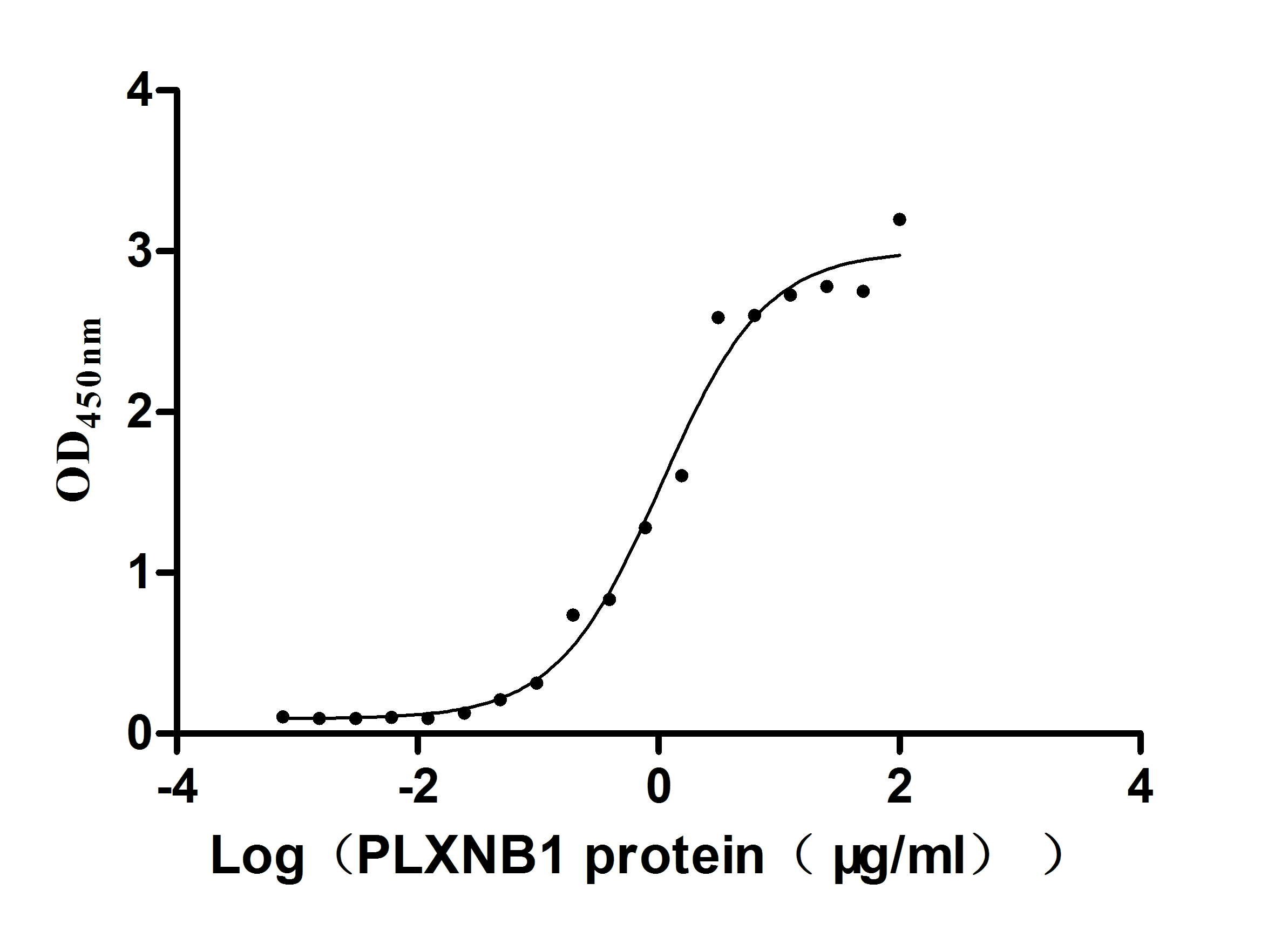The C-terminally hFc-tagged human semaphorin-4D (SEMA4D) is an active recombinant protein expressed in mammalian cells. Its expression region corresponds to amino acids 22-734 of the human SEMA4D. The purity of this SEMA4D protein is greater than 95% measured by SDS-PAGE. It migrated to the molecular weight band of about 120 kDa on the gel. Its endotoxin is less than 1.0 EU/ug determined by the LAL method. In a functional ELISA, this recombinant SEMA4D protein can bind biotinylated Pepinemab. The EC50 is 1.005-1.776 ng/mL. SEMA4D, also known as CD100, is involved in immune regulation, bone formation, platelet inactivation, angiogenesis stimulation, and cancer bone metastasis.








